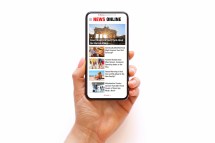Zelle is a popular digital payment service that allows users to send and receive money quickly and securely. However, like any online platform, users sometimes face issues logging into their Zelle accounts. This article will guide you through common Zelle login problems and provide easy solutions to get you back on track.
Understanding Common Zelle Login Issues
Users may encounter several types of login problems with Zelle, including forgotten passwords, account lockouts due to multiple failed attempts, or issues related to incorrect credentials. Sometimes technical glitches or outdated app versions can also prevent successful login attempts.
Step-by-Step Solutions for Password Recovery
If you’ve forgotten your password, start by clicking the ‘Forgot Password’ link on the login page. You’ll be prompted to enter your registered email address or phone number. Follow the instructions sent via email or text message to reset your password securely. Make sure your new password is strong and unique.
Resolving Account Lockouts and Verification Problems
Repeated unsuccessful login attempts can temporarily lock your account as a security measure. To resolve this, wait for a while before trying again or contact your bank’s customer support for assistance in unlocking your account. Additionally, ensure that any verification codes sent are entered correctly and promptly during multi-factor authentication steps.
Troubleshooting Technical Issues with the App or Website
If you’re unable to log in due to app errors or website loading problems, try clearing the app cache or browser cookies first. Updating the app to its latest version often fixes bugs causing login failures. Also, check if your internet connection is stable and avoid using VPNs that might interfere with access.
When to Contact Customer Support for Help
If you’ve tried all troubleshooting methods without success, it may be time to reach out directly to Zelle’s customer support or your financial institution’s help desk. They can provide personalized assistance tailored to your specific situation ensuring secure access back into your account.
By understanding these common issues and following these practical solutions, you can confidently navigate any obstacles related to logging into Zelle. Staying patient and methodical ensures you maintain seamless access for fast money transfers whenever needed.
This text was generated using a large language model, and select text has been reviewed and moderated for purposes such as readability.






